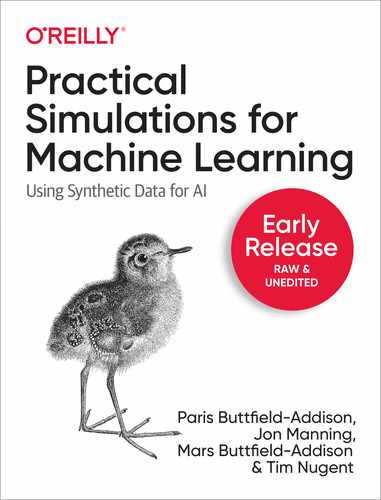Simulation and synthesis are core parts of the future of AI and machine learning. Consider: programmers, data scientists, and machine learning engineers can create the brain of a self-driving car without the car. Rather than use information from the real world, you can create artificial data using simulations to train traditional machine learning models. That's just the beginning. With this practical book, you'll explore the possibilities of simulation- and synthesis-based machine learning and AI, with a focus on deep reinforcement learning and imitation learning techniques. AI and ML are increasingly data driven, and simulations are a powerful, engaging way to unlock their full potential. With this deeply practical book, you'll learn how to:
Table of Contents
- Preface
- 1. Introducing Synthesis and Simulation
- 2. Creating Your First Simulation
- Our Simulation
- Setting up
- Creating the Unity Project
- The Environment
- The Floor
- The Target
- The Agent
- Starting and Stopping the Agent
- Letting the agent observe the environment
- Letting the agent take actions in the environment
- Giving the agent rewards for its behaviour
- Finishing touches for an agent
- Providing a manual control system for the agent
- Training with the Simulation
- Monitoring the training with TensorBoard
- When the training is complete
- What’s it all mean?
- Coming up next
- 3. Creating Your First Synthesised Data
